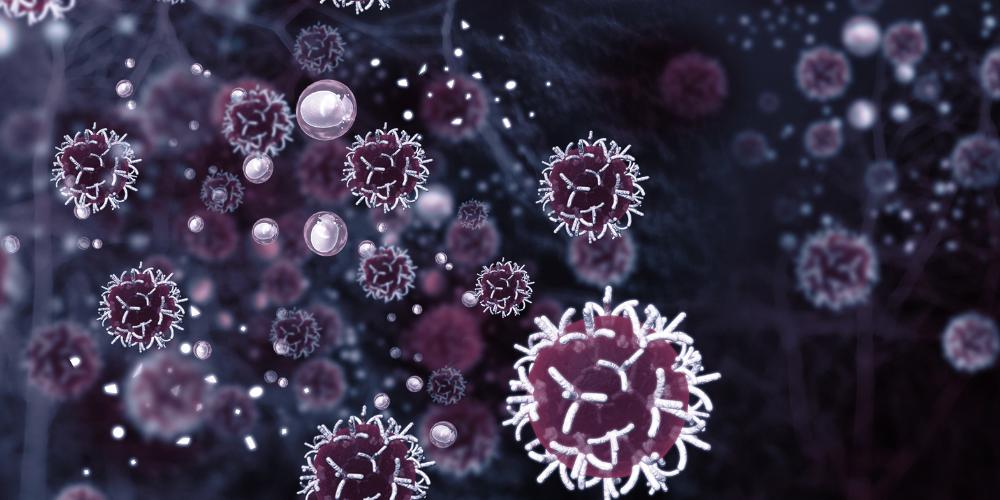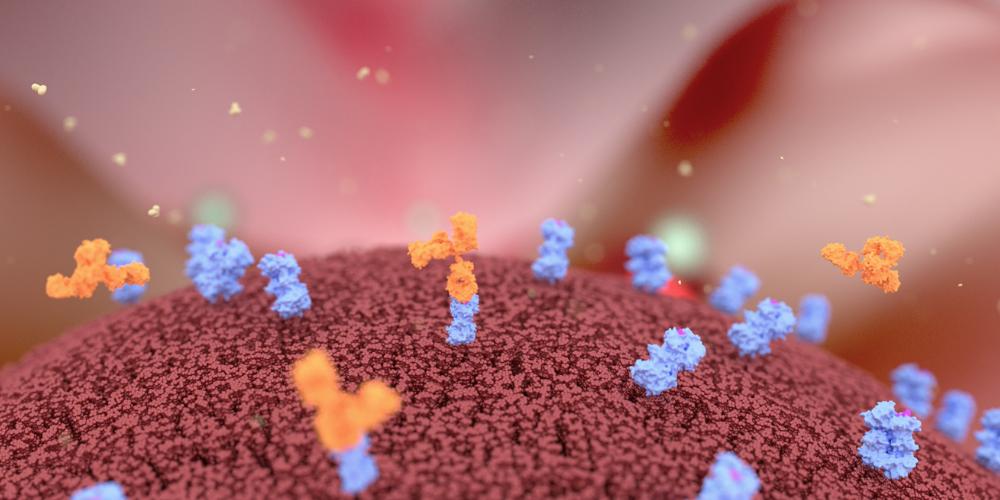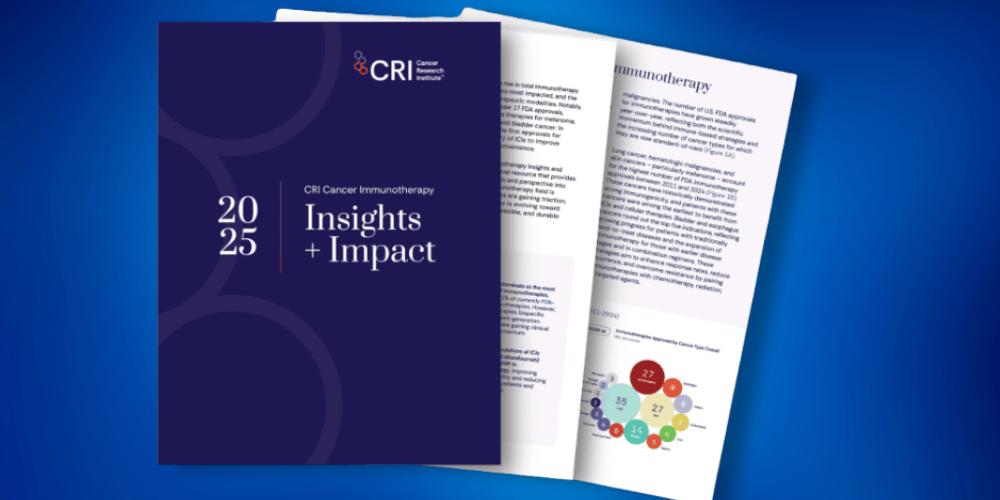Developing a Molecule to Help Patients Respond to Immunotherapy
Immune checkpoint inhibitors have revolutionized oncology but they don't work for all patients. Dr Lan Huang, Co-founder, Chairman & Chief Executive Officer, BeyondSpring Pharmaceuticals is taking on the development of plinabulin to offer patients a second chance at ICI-combination strategies.

Why is plinabulin important for immuno-oncology?
Plinabulin is a potent activator of GEF-H1, an immune defense protein that drives dendritic cell (DC) maturation, antigen cross-presentation and subsequent T cell activation.
We’re combining plinabulin with PD-(L)1s plus chemotherapy or radiation which liberates tumor neoantigens, to augment the PD-(L)1’s anti-cancer efficacy and at the same time potentially reduce chemotherapy-induced neutropenia (CIN). The GEF-H1’s relationship to DC maturation is well-understood from our research, which was published in “Cell Reports” in 2019. How GEF-H1 upregulation leads to CIN reduction still requires further exploration to understand its mechanism in humans.
What was intriguing to you about the molecule?
What drew me to it as an asset was the anti-cancer efficacy – modest, but present – and with an unusual property in neutropenia reduction unlike traditional chemotherapy. In addition, I noticed that sequencing of plinabulin use was crucial in combination settings. Traditional tubulin binders are chemotherapies that when combined with other agents, there is anti-cancer benefit no matter how you sequence it.
When plinabulin was combined with docetaxel in a NSCLC preclinical model, it had to be given after the docetaxel to have any anti-cancer synergy. Otherwise, it didn’t work. Plinabulin looks to be a “mild” agent by itself in that it doesn’t work like traditional chemotherapy, but it can act like an immunotherapy by being a potent antigen-presenting agent. Therefore, plinabulin needs chemotherapy or radiation to generate tumor antigens first, and then it leads to DC maturation.
How could plinabulin benefit patients receiving IO?
Immune checkpoint inhibitors (ICIs) have changed the landscape of treatment for cancer patients, but more than 60% of patients eventually fail PD-1 therapies due to acquired resistance1. PD-(L)1 as a monotherapy or in combination no longer works well in those patients post-ICI failure, which constitutes a very high unmet need worldwide.
We are exploring if combining those chemo-IO regimes with plinabulin could benefit patients, who have failed PD-(L)1, to respond to PD-(L)1 again. One such study is the IIT study with Merck in 2L/3L metastatic NSCLC patients who failed PD-(L)1, which we expect to have preliminary data readout in the second half of 2024.
"This may enable patients taking chemotherapy to stay on treatment longer and have fewer chemotherapy treatment disruptions or dose reductions."
What does potentially reducing CIN mean for treating oncology patients?
This may enable patients taking chemotherapy to stay on treatment longer and have fewer chemotherapy treatment disruptions or dose reductions. So, the CIN prevention property of plinabulin is a bonus to patients who receive high-risk chemotherapy such as docetaxel or patients with certain risk factors to standard chemotherapy.
If our clinical exploration is successful, the regimen of Plinabulin, PD-(L)1 and chemotherapy could potentially keep patients responding to PD-(L)1 longer and reduce CIN; this combination brings a favorable benefit/risk ratio for patients with high unmet medical needs.
How does the addition of plinabulin help previously unresponsive patients respond to PD-1 therapy?
Acquired resistance to ICI therapy in NSCLC can be of two potential causes. One is that there aren’t enough tumor antigen-specific T cells or that T cells undergo exhaustion in the tumor microenvironment, and the other is that there are certain mutations in the antigen-presenting pathway. In the context of a chemo-IO-plinabulin combination, chemotherapy would generate the “real-time” tumor neoantigens by breaking open the cancer cells.
As plinabulin induces DC maturation, it would help present those tumor-specific antigens to the T cells, and PD-(L)1 inhibition allows better tumor-reactive T cell killing. Essentially, we are reactivating the antigen-presenting pathway to help overcome acquired resistance for a more durable antitumor response.
How have you seen that work in practice?
We released preliminary data from a seven-year collaboration with MD Anderson Cancer Center at the 2023 SITC conference. It was a Phase I study looking at the combination of radiation-IO-plinabulin in a mixed patient population across several cancers that had failed prior PD-(L)1 agents. Per standard-of-care alone, the overall response rate (ORR) in this patient population was ~10%, and the disease control rate was around 30%.
The responses of plinabulin-treated patients (in combination) were almost doubled: >20% ORR and the disease control rate was more than 50%. This gave us confidence that a combination of radiation/chemotherapy, plus IO and plinabulin, could be a new regimen for patients who have failed PD-(L)1 inhibitors. Despite the small number of patients, the responding tumor types included non-small-cell lung cancer, head and neck squamous cell carcinomas, and Hodgkin’s lymphoma.
In addition, this Phase I study had a breakthrough discovery. In patients with clinical benefits (partial response and stable disease patients), plinabulin was shown to induce GEF-H1 immune activation and DC maturation. These mechanistic findings across different cancer types give us more confidence in the validity of our triple IO combination approach, which lays a good foundation to apply plinabulin IO combination in a variety of cancer indications. We are trying to better understand what keeps plinabulin from inducing DC maturation in non-responders, which can further inform patient selection.
"We are reactivating the antigen-presenting pathway to help overcome acquired resistance for a more durable antitumor response."
You had a successful Phase III study in second-line/third-line NSCLC in EGFR wild type patients; what did that work confirm for you about plinabulin’s utility?
The Dublin-3 study was a Phase III study in EGFR-wild type second/third-line NSCLC patients comparing plinabulin and docetaxel vs. docetaxel alone. We enrolled 559 patients in 58 centers globally with a 1:1 randomization. The primary endpoint was overall survival (OS); secondary endpoints were progression-free survival (PFS), objective response (ORR), grade 4 neutropenia, and 2-year and 3-year OS rate.
Plinabulin and docetaxel combination had a successful OS benefit compared to docetaxel, with an OS hazard ratio of 0.82. In every subset analysis – including non-squamous, squamous, second line, third line and prior treatment of PD1 – all had an OS hazard ratio of less than 1. In addition, the combination almost doubled 2-year and 3-year survival rates compared to docetaxel alone, signaling the immune benefit of plinabulin.
What have been some of the challenges in the development process?
One challenge is that although plinabulin is a tubulin binder, it has a novel chemical structure and binding site that acts as a first-in-class asset. Therefore, we had to find the road ourselves. We could not develop it as another chemotherapy because of its unique tubulin binding. According to extensive research at the University of Basel, Harvard Medical School, and MD Anderson Cancer Center, it’s more of an immune-enhancing agent.
Additionally, over the course of development, the landscape of treatment has changed, and we’ve had to catch up. Initially, we were examining adding plinabulin to docetaxel for NSCLC treatment. With PD-(L)1 approvals and moving towards the first line, it’s fortunate that plinabulin as an immune enhancing agent could help fill the gap between tumor antigens and T cells. And today, we can see that when combined with a PD-1 inhibitor and chemotherapy or radiation, plinabulin potentially augments the anti-cancer benefit after prior ICI failure, and it can also reduce chemotherapy-induced neutropenia for a favorable benefit-to-risk ratio.
What is special about today’s IO environment that is relevant to the work you’re doing?
In 2006, when plinabulin was in development by Nereus, it was hard to appreciate the benefit of an immune agent-like small molecule because the IO field was in its infancy. With the first approval in 2014 and the value of PD-1 inhibitors in restoring a patient's own anti-tumor immune response, something like exploring plinabulin’s immunomodulatory function came into the conversation. Fortunately, the timing is right for us now to develop plinabulin as an IO-enhancing agent.
What’s next?
If we can fully understand the acquired resistance in PD-(L)1 failed patients, not only in NSCLC but in other cancers, that would be most helpful. Medical researchers are actively investigating novel agents, modalities, and IO combinations that may overcome acquired resistance so that patients can respond again.
We’re trying to understand plinabulin, and its use, in a scientific way so that we can exploit its potential for patients with unmet medical needs. We appreciate that DC maturation is a universal mechanism in the cancer/immunity cycle, and with PD-(L)1 being approved in ~40 different cancer indications, plinabulin may have a lot of room to play.
1. Memon D et al., Cancer Cell 2024; DOI: 10.1016/j.ccell.2023.12.013









